Prehistoric Rock Art in Krabi, Thailand - January 2012.
Posted on May 17, 2012 in category
Tourists travelling to the south-west coast of Thailand around the usual resort sites of Phuket and Phi Phi Island should stop in Krabi Province to see some of Thailand’s best prehistoric cave art. Thailand can boast approximately 170 cave art sites, 23 in southern Thailand with 10 of these heritage sites around the Krabi/Phangnga area. The coastal town of Aonang is a good location for a base and the original tour guide, who calls himself ‘Caveman’, is just the person for this worthwhile adventure. The Krabi village of Ban Bor-Thor is the starting point for a kayaking experience that most people find is very good exercise with little trouble in manoeuvring flat-bottomed PVC kayaks up the river and through the natural channels among the amazing mangroves. However, one Singaporean couple, who were novices to kayaking, did flip their kayak but were quickly assisted aboard again.
On the way to the rock art caves kayakers paddle through dark water tunnels that lead to limestone sea caves or massive grottoes that have huge stalactites and stalagmites such as Thum Lod Thi. A word of warning: watch the weather closely as tourists have been caught out by flash floods in Thai caves.
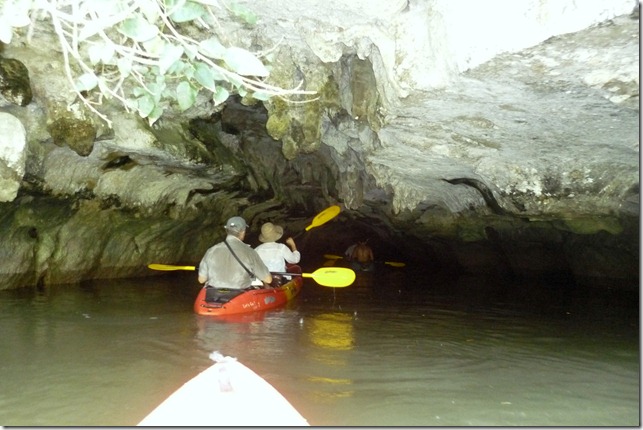
Entering one of the sea cave tunnels
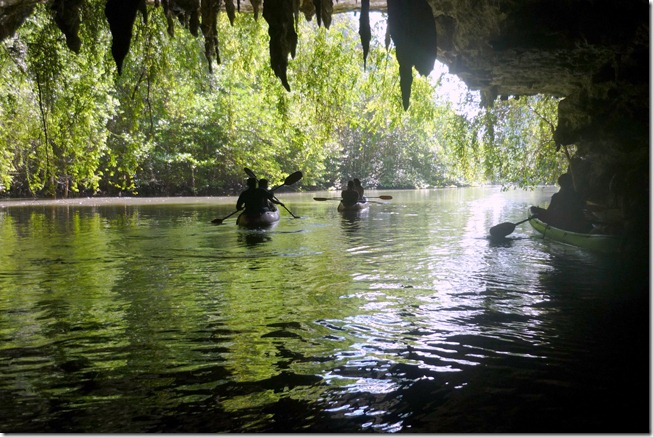
Exiting Thum Lod Cave
The 10 heritage cave sites around Krabi include: Tham Phee Hua To (Phee Hua To Cave), Leam Chao Lay (Chao Lay Headland), Tham Chao Lay (Chao Lay Cave), Leam Fi Mai (Fi Mai Headland), Leam Tai Raed (Tai Raed Headland), Khao Khian (KhianMountain), Khao Raya (Raya Mountain), Tham Naga (Naga Cave), Khao Phra Aad Thao (Phra Aad Thao Mountain) and Tham Phrayanaga (Phrayanaga or Viking Cave see: http://www.themua.org/collections/items/show/1214). ‘Tham Phee Hua To’ or Phee Hua Cave has 238 separate examples of cave art ranging from ‘clothes peg’ human figures to birds, lobsters and even crocodiles (don’t worry there are no crocs now!). Interestingly, ‘Cave Man’ told us that one of the human figures with a headdress was unique with one exception in Australia at Kakadu. Once I saw the figure I was able to inform ‘Cave Man’ that I thought there may be another site also in Australia with a similar headdress - an Aboriginal rock shelter at Mudgegonga near Albury-Wodonga. An Aboriginal elder, the late Eddie Kneebone, took me to see it many years ago.
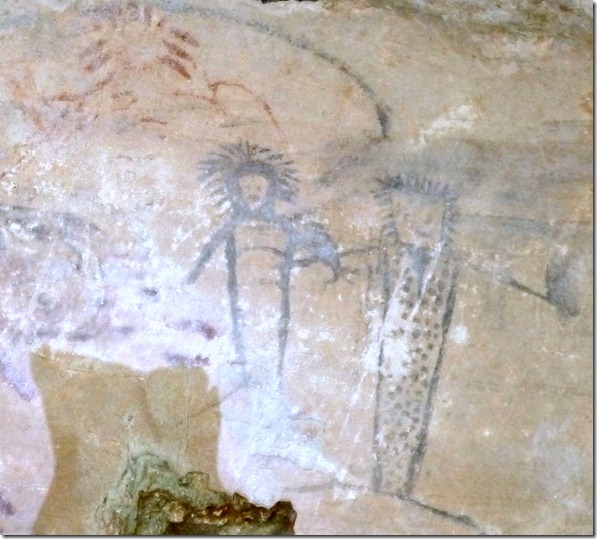
I think some similarities also exist with these ‘clothes peg’ figures and Kimberley Aboriginal cave art: see http://www.kimberleyfoundation.org.au/tassel-bradshaw-figures/ and http://www.kimberleyfoundation.org.au/understanding-clothes-peg-figure-period/
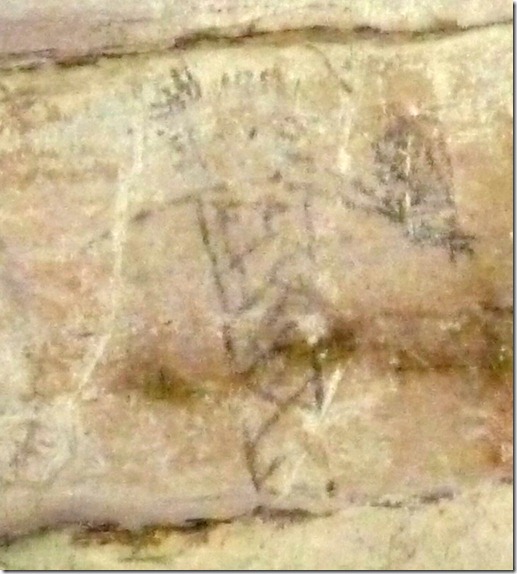
Another human figure inside the vast limestone karst cave of Thum Lod
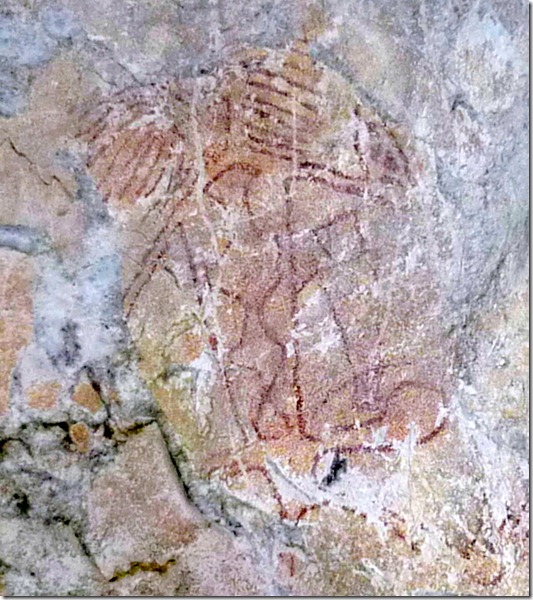
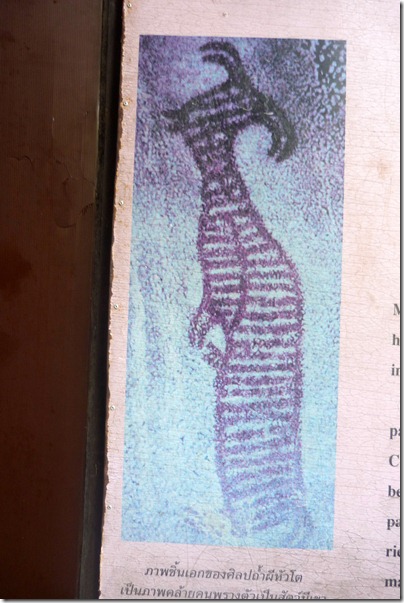
One theory suggests that the ancestors of the ‘Chaole’ or Sea Peoples, who still inhabit the small islands of the Andaman Sea, began depicting their everyday life in these caves including the ‘Big-headed Ghost’ (above- modern nickname)
See A. Sukkham’s article: http://bu-th.academia.edu/AtthaAtthasit/Papers/704692/The_Ancient_Rock_Arts_Management_for_Sustainable_Tourism_in_the_West_Coast_of_Southern_Thailand
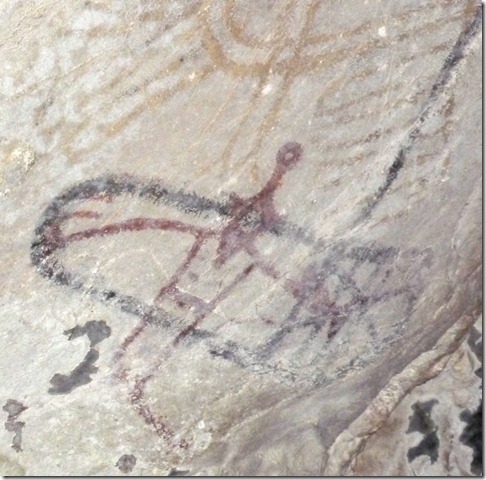
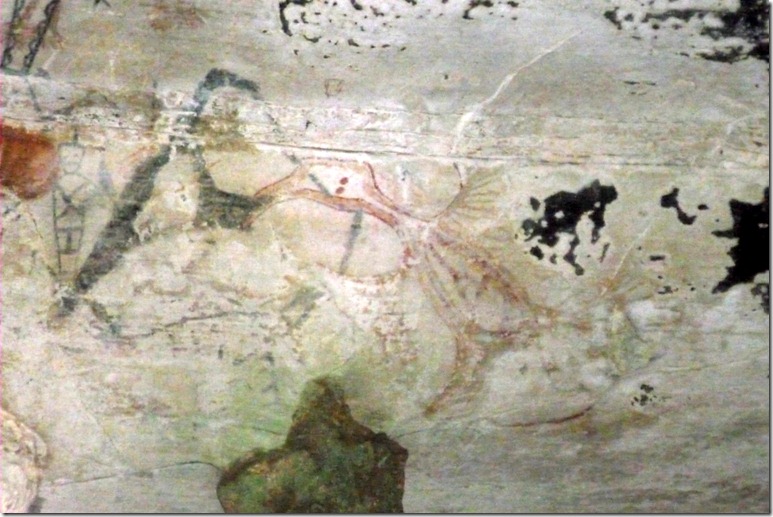
Birds depicted in two styles
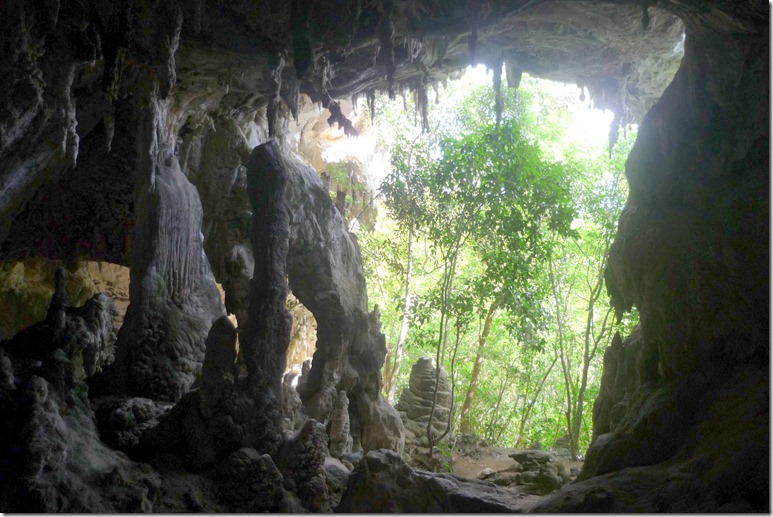
Although it’s difficult to absolute date cave art, Phee Hua Cave art is relatively dated circa 5,000 B.P.
Photographs thanks to Kerrie and Paul Gatt (Australia)